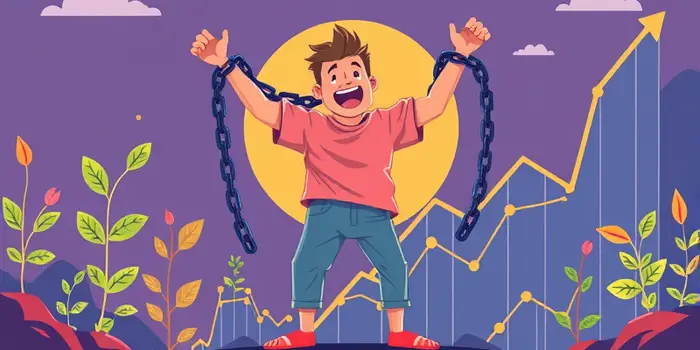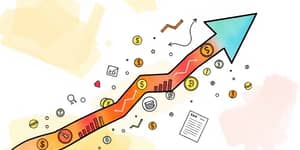
Every dollar you owe is a weight on your shoulders, limiting your possibilities and stealing your peace. Imagine cutting those chains and stepping into a life where freedom, growth, and opportunity are yours to command. This journey toward unwavering commitment to debt elimination can transform your present and forge a brighter future.
In this article, we’ll guide you through the definition, benefits, strategies, societal impacts, and inspiring stories behind debt-free living. You’ll learn how eliminating debt fuels growth, empowers choices, and lays the foundation for lasting wealth.
Living debt-free means having no outstanding balances on credit cards, auto loans, or student loans (excluding a mortgage in some cases). It’s not just about numbers on a statement—it’s a philosophy of greater autonomy over personal income that reshapes how you interact with your money.
When debts vanish, you reclaim the freedom to direct every dollar toward your dreams, whether that’s starting a business, traveling the world, or building a nest egg for retirement. The transition to debt-free living begins with a clear definition of your obligations and a plan to tackle them one by one.
The rewards of a debt-free life extend far beyond a zero balance. They touch every aspect of your well-being and unleash opportunities you never thought possible.
Eliminating debt can reduce financial stress, freeing your mind from constant worry about minimum payments and interest rates. This mental clarity often translates into better sleep, lower cortisol levels, and an overall sense of calm.
With your income no longer directed toward lenders, you gain freed up income for spending on investments, travel, or charitable giving. This financial freedom opens doors to new opportunities—maybe a side business or a course that advances your career.
Research links reduced financial stress to better physical health. When you’re not weighed down by mounting bills, you may adopt healthier habits, visit the doctor regularly, and experience fewer stress-related illnesses.
Finally, paying off revolving balances lowers your credit utilization ratio, often improving your credit score. A higher score means better interest rates on mortgages, auto loans, and even insurance premiums.
Becoming debt-free doesn’t happen overnight. It requires a strategic plan, disciplined execution, and occasional course corrections. Here are three proven methods to accelerate your journey:
Start by setting aside $1,000 as a starter emergency fund. This buffer protects you from unexpected expenses—medical bills, car repairs, or urgent home fixes—so you don’t resort to credit cards.
Next, apply the Debt Snowball Method. List your debts from smallest to largest, regardless of interest rate. Attack the smallest balance first while making minimum payments on the rest. Once that debt is eliminated, roll its payment into the next smallest balance. With each victory, you gain confidence and financial momentum.
After paying off all high-interest debts, shift your focus to investing and saving. Maximize contributions to retirement accounts, build a six-month living-expense fund, and explore diversified investments. This phase cements your foundation for long-term wealth rather than chasing the quick payoff of a high-interest balance.
Consumer debt isn’t just a personal burden; it shapes our economy and collective well-being. The total U.S. consumer debt reached $17.57 trillion in 2024, reflecting mortgages, auto loans, credit cards, and student loans in aggregate.
When consumers are shackled by high payments, they spend less on goods and services, slowing economic growth. Conversely, a debt-free population channels more into local businesses, investments, and innovation.
Policy initiatives—such as expanding public benefits, raising minimum wages, and offering unconditional cash transfers—can also alleviate personal debt and improve public health. These measures reduce reliance on high-interest credit, leading to healthier households and a more robust economy.
Real-life narratives bring the path to debt freedom into vivid focus. Take Jason and Amethyst, who faced $73,500 in combined debt—credit cards, student loans, and a car loan. Living paycheck-to-paycheck, they felt trapped and anxious.
By committing to the Debt Snowball Method, they eliminated the smallest $3,200 balance in six months. Each successive payoff felt easier, and within 3.6 years, every debt was gone.
Today, they funnel the funds that once paid creditors into a growing investment portfolio and a family vacation fund. Their journey exemplifies how consistent action yields transformative results.
Eliminating debt is more than a financial goal; it’s a life-changing commitment that fuels growth, health, and happiness. From reduced stress and stronger credit to the ability to invest and give back, the benefits ripple through every sphere of your life.
Your debt-free journey may require sacrifices, but the reward—complete autonomy over your finances—is priceless. Start today by establishing an emergency fund, choosing a payoff strategy, and envisioning the person you’ll become on the other side of debt. With discipline, patience, and a clear plan, you can build a life of true financial freedom.
References













